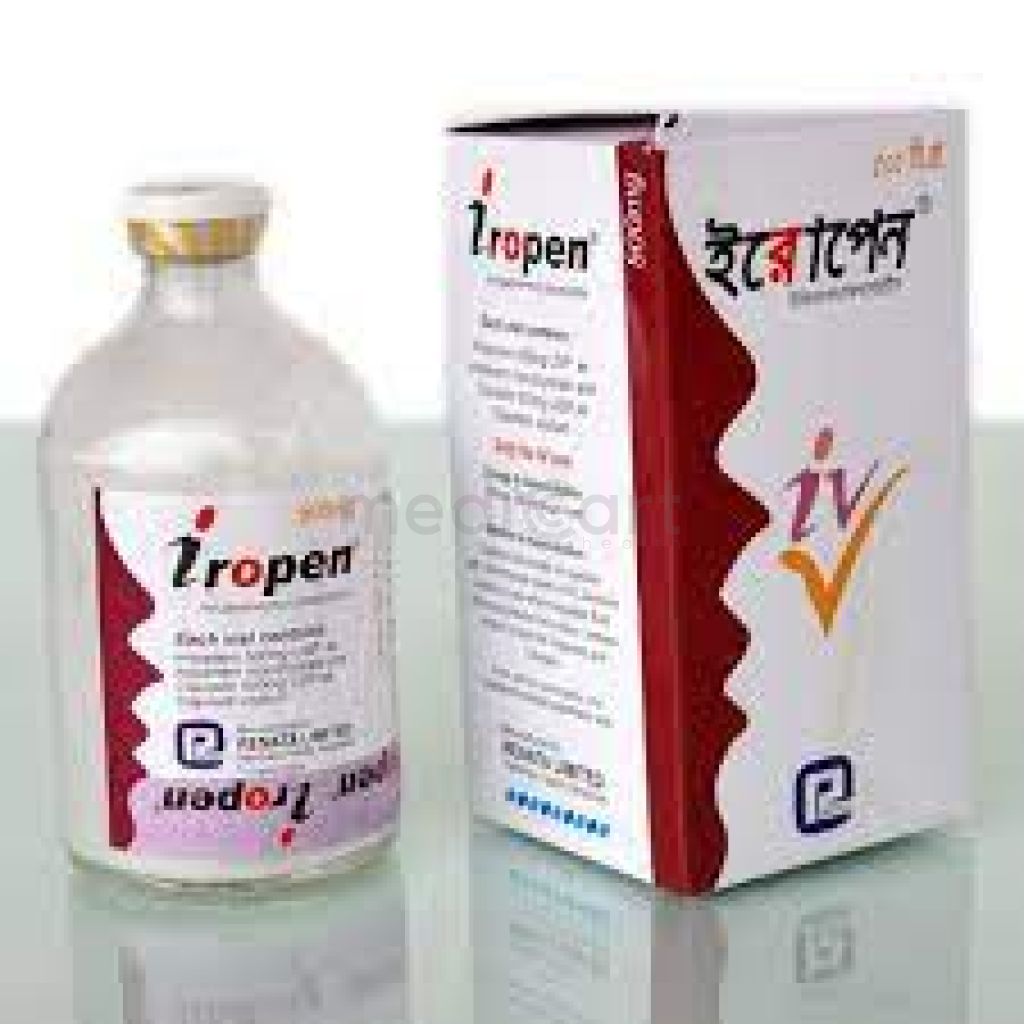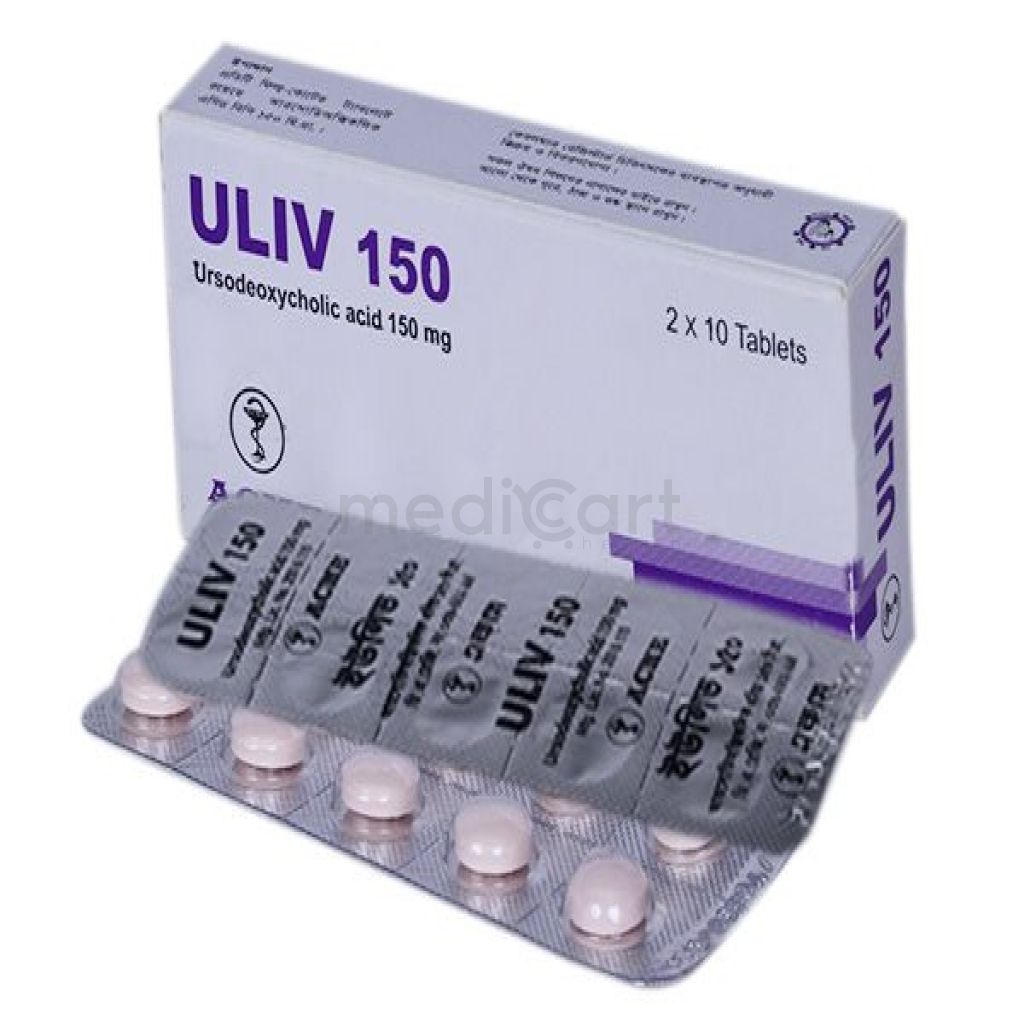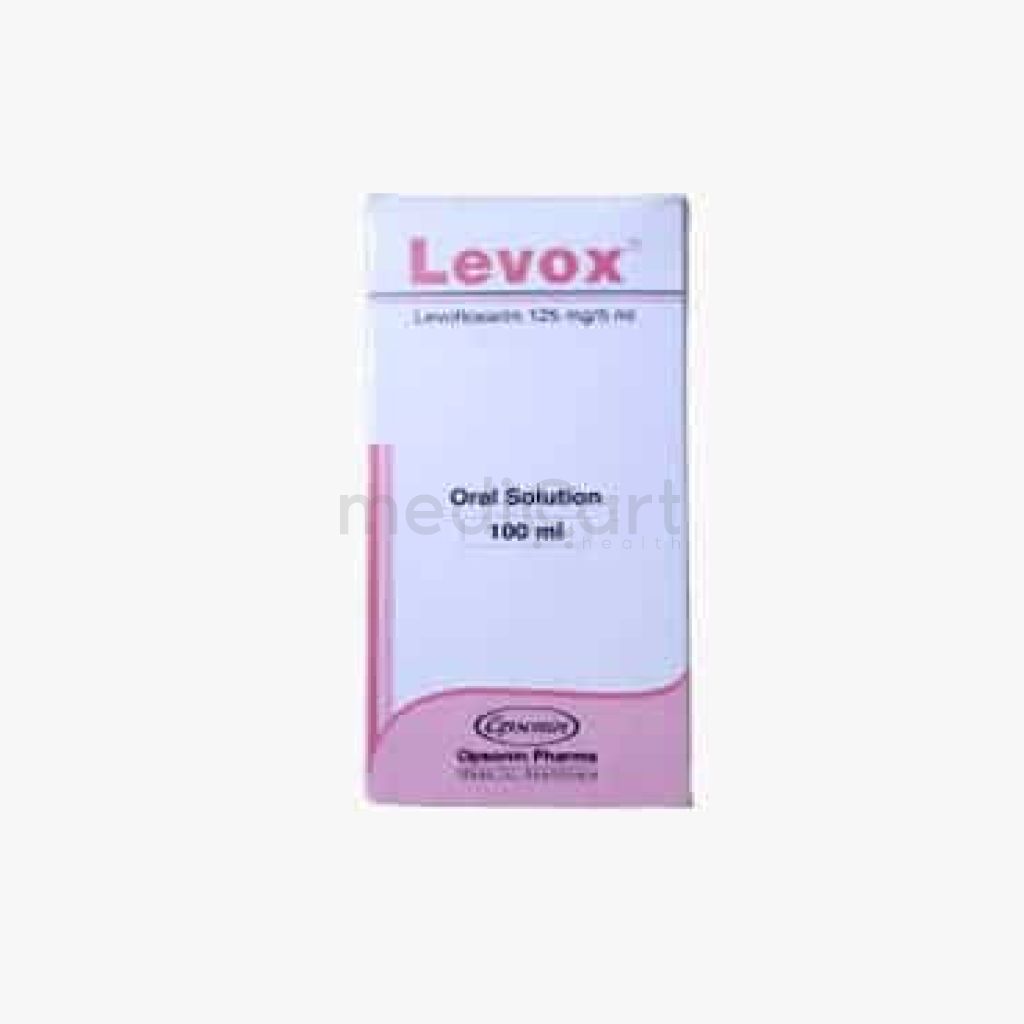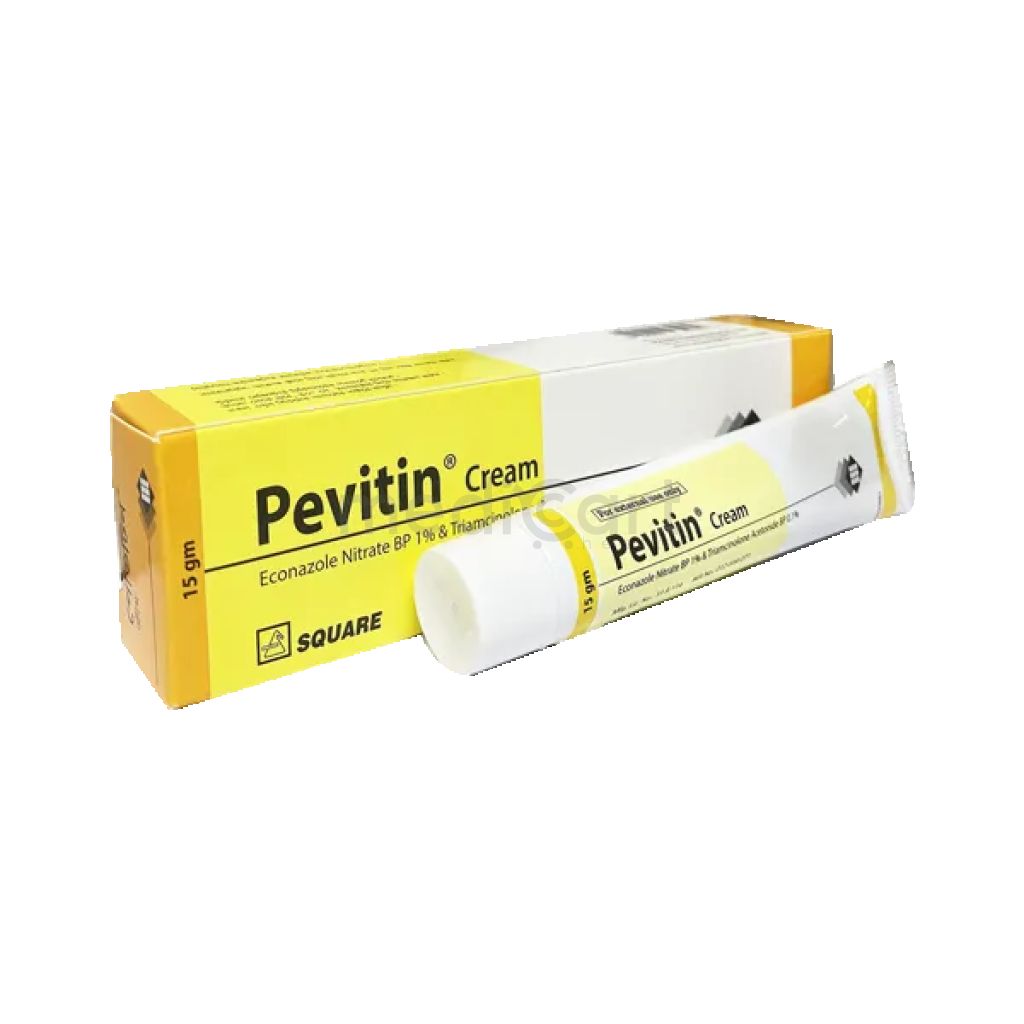

Iropen IV/IM 500mg + 500mg
Injection
Pack Size :
1 vial x 1 Bottle
Generics :
Imipenem + Cilastatin
Manufacturer :
Renata Limited
Best Price *
TK
1,295.00
* Delivery will be done in Dhaka city only.
Alternative Product
More Information About - Iropen IV/IM 500mg + 500mg
Description
Generic Name
Imipenem + CilastatinPrecaution
Caution when used in patients with known hypersensitivity to other beta-lactams due to possibility of cross-sensitivity. CNS disorders such as epilepsy; renal, hepatic impairment; pregnancy, lactation. Lactation: Drug distributed in breast milk; use with cautionIndication
Cystic fibrosis, Bacterial septicemia, Endocarditis, Susceptible infections, Lower Respiratory Tract Infections, Gonorrhea, Skin and skin structure infections, Urinary tract infections, Bone and Joint Infections, Surgical ProphylaxisContra Indication
Hypersensitivity.Dose
N/ASide Effect
1-10% Phlebitis (2-5%),Eosinophilia (4%),Miscellaneous dermatologic effects (<3%),Potentially false-positive Coombs test (2%),Miscellaneous hematologic effects (<2%),Transient increase in blood urea nitrogen (BUN) or serum creatinine (<2%),Seizures (1.5%),Nausea, diarrhea, vomiting (1-2%) <1% Abnormal urinalysis,Agitation,Anaphylaxis,Anemia,Confusion (acute),Dizziness,Dyskinesia,Emergence of resistant strains of Pseudomonas aeruginosa,Fever,Hypersensitivity,Hypotension,Elevated liver function test (LFT) results,Increased prothrombin time (PT),Neutropenia (including agranulocytosis),Palpitations,Pruritus,Pseudomembranous colitis Potentially Fatal: Stevens-Johnson syndrome, toxic epidermal necrolysis.Pregnancy Category
Name : C
Description
Animal reproduction studies have shown an adverse effect on the fetus and there are no adequate and well-controlled studies in humans, but potential benefits may warrant use of the drug in pregnant women despite potential risksMode of Action
Imipenem is a potent inhibitor of bacterial cell wall synthesis and is bactericidal against a broad spectrum of pathogens. It is resistant to degradation by bacterial beta-lactamases. Cilastatin is an inhibitor of dehydropeptidase I, an enzyme found in the brush border of the renal tubules. It is given as the sodium salt with imipenem to prevent its renal metabolism and protect against nephrotoxic effects.Interaction
Concurrent admin with probenecid may increase the half-life of cilastatin. Increased risk of generalised seizures when used concurrently with ganciclovir.Pregnancy Category Note
Pregnancy Available data from a small number of postmarketing cases in pregnancy are not sufficient to identify any drug-associated risks for major birth defects, miscarriage, or adverse maternal or fetal outcomes Animal data Developmental toxicity studies with imipenem and cilastatin sodium (alone or in combination) administered to mice, rats, rabbits, and monkeys at doses 0.4 to 2.9 times the recommended human dose (RHD), (based on body surface area), showed no drug-induced fetal malformations Embryofetal development studies with imipenem/cilastatin administered to cynomolgus monkeys at doses similar to RHD (based on body surface area) showed an increase in embryonic loss Lactation There are insufficient data on presence of imipenem/cilastatin in human milk, and no data on effects on breastfed child, or on milk production; developmental and health benefits of breastfeeding should be considered along with mother?s clinical need for therapy and any potential adverse effects on breastfed child from therapy or from the underlying maternal conditionAdult Dose
Lower Respiratory Tract, Skin/Skin Structure, & Gynecologic Infections Mild to moderate: 500-750 mg IV q12hr Intra-abdominal Infections Mild to moderate: 250-500 mg IV q6hr Severe: 500 mg IV q6hr or 1 g q8hr for 4-7 days, provided that infection is brought under control Pseudomonas Infections 500 mg IV q6hr; higher dosages may be administered, depending on organism sensitivity Urinary Tract Infections Uncomplicated: 250 mg IV q6hr Complicated: 500 mg IV q6hr Susceptible infections Moderate infections IV: Fully susceptible organisms: 500 mg IV q6-8hr Moderately susceptible organisms: 500 mg IV q6hr or 1 g IV q8hr Severe infections Fully susceptible organisms: 500 mg IV q6hr Moderately susceptible organisms: 1 g IV q6-8hr; not to exceed 50 mg/kg/day or 4 g/day, whichever is lowerChild Dose
Child: IV, IM 60?100 mg/kg/day q6h IM form not approved for <12 yRenal Dose
Renal impairment: CrCl (ml/min) 31-70 500 mg every 6-8 hr 21-30 500 mg every 8-12 hr 6-20 250 mg or 3.5 mg/kg (whichever is lower) every 12 hr <5 Only give if haemodialysis started within 48 hrAdministration
IV Preparation Reconstitute infusion bottles with 100 mL of compatible diluent Reconstitute vials with a portion (usually 10 mL) of IV fluid withdawn from the IV container, dissolve, and return to container; repeat Reconstituted solutions are stable for 4 hours at room temperature and 24 hours refrigerated (4 C) in NS Normal color ranges from clear to yellow; these variations do not affect potency, but solution should be discarded if brown IV Administration Do not administer by IV push Final concentration should not exceed 5 mg/mL Infuse <500 mg over 20-30 minutes (15-30 minutes in children); infuse >500 mg over 40-60 min Vial contents must be transferred to 100 mL of infusion solutionDisclaimer
The information provided herein are for informational purposes only and not intended to be a substitute for professional medical advice, diagnosis, or treatment. Please note that this information should not be treated as a replacement for physical medical consultation or advice. Great effort has been placed to provide accurate and comprehensive data. However, Medicart along with its authors and editors make no representations or warranties and specifically disclaim all liability for any medical information provided on the site. The absence of any information and/or warning to any drug shall not be considered and assumed as an implied assurance of the Company.





